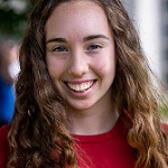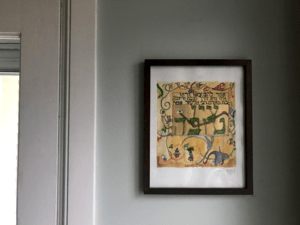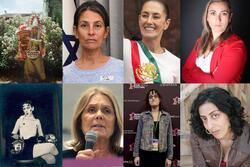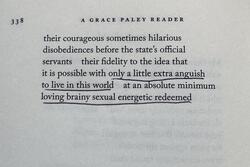Ayin Tovah: Learning to See
Just before my Bat Mitzvah, I learned some advice from first-century Jewish sage, Eliezer ben Hurcanus, regarding a “good path” to follow in life. In a passage from Pirkei Avot, he recommended “ayin tovah,” a “good eye” in Hebrew, which, my teacher explained, meant judging people in a favorable light.
At first, this advice confused me. Up until then, I had been taught to approach people not with judgment but with curiosity. I began to try to understand what an “ayin tovah” could be that would allow me to see people with curiosity. The more I thought about it, the more I realized that, to me, the value of a good eye is about learning how to see. A good eye observes without immediately moving to judgment because part of learning to see is understanding that there is so much that cannot be seen.
Having a good eye and keeping an open mind are related. This is a challenge because sometimes it feels like judging is inevitable. But Rabbi Eliezer’s words have influenced me to be careful, and to think about my observations before making judgments. I try to keep those words at the forefront of my mind when I meet someone new. They remind me as to see before I judge.
One year after my Bat Mitzvah, in my last year of middle school, my family moved from Columbia, South Carolina, to Ithaca, New York. I feared that I would be lonely and isolated, and I was anxious about whether I’d make new friends. Approaching my new world with a good eye and an open mind empowered me to be receptive to people, and I think that affected how they saw me, as well.
When I entered a room full of unfamiliar faces during my first study hall, I smiled and sat down in an empty chair between two of my peers. After a moment of hesitation, I started a conversation with them, which began with small talk, but moved quickly into a discussion of similarities and differences between our experiences living in the North and the South. Later, when it was time for lunch, I was nervous. I didn’t know who to sit with and assumed that everyone had regular tables. Both new friends in study hall almost immediately approached me to ask if I would sit with them. My transition was easier than I expected, in part because Rabbi Eliezer’s words moved with me.
Rabbi Eliezer’s teachings also gave me confidence to get involved in my school and community. In a new environment, it was really helpful for me to be able to trust, but also question, my own eyes. Rabbi Eliezer’s words especially stood out to me when, with my soccer team, I volunteered to help build a home for a family in need. About halfway through the workday, one of the instructors mentioned the names of the family members whose home we were building. I was caught completely off-guard when I learned that the house was being built for one of my friends. It felt awkward to have knowledge about something that seemed intimate, given that I found out about it from a third party. This experience made me realize that even though you might be friends with someone, it doesn’t mean you know everything about them. In that moment, I chose to follow my understanding of an “ayin tovah” by acknowledging that, in most situations, we cannot come to conclusions about people by looking. We can never really say, “That person has it so easy” or “They’ve never had to deal with a challenge” based solely on speculation. A way to think about this is to distinguish between looking, which is on the surface, and seeing, which is deeper and more empathetic.
While I have kept Rabbi Eliezer’s words in mind, I have also learned to observe more deeply with my own eyes. I plan to continue making connections among friends, communities, and academic classes as I grow and further my education.
This piece was written as part of JWA’s Rising Voices Fellowship.








Thank you for sharing. This was both beautifully written and helpful to me in my desire to see with the “good eye”.
That's wrong it is infact a Jewish idiom, having a bad eye is being stingy or selfish and having a good eye is being generous